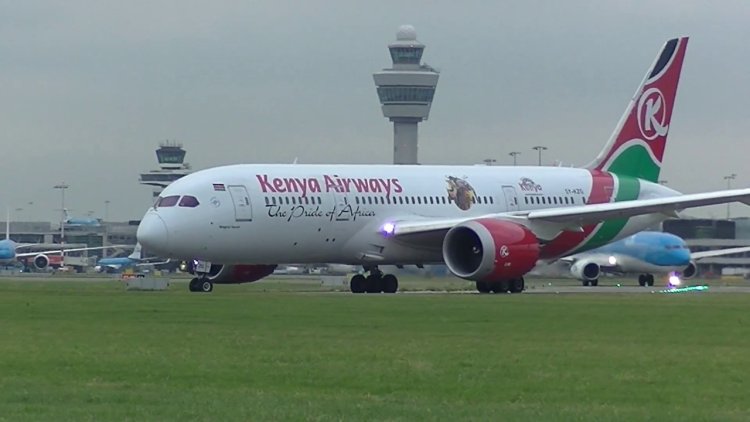Watch Flight Path Where 2 Pilots Fell Asleep Before Landing [VIDEO]
The duo were flying a Boeing 737-800 at 37,000 feet when they fell asleep during the flight that took place on the morning of Monday, August 15.
![Watch Flight Path Where 2 Pilots Fell Asleep Before Landing [VIDEO]](https://viraltea.co.ke/uploads/images/2022/08/image_750x_62ff6a304b8dc.jpg)
Two pilots flying an Ethiopian Airlines Flight 343 from Khartoum International Airport in Sudan to Bole International Airport in Ethiopia fell asleep mid-flight, causing panic amongst its passengers.
The duo were flying a Boeing 737-800 at 37,000 feet when they fell asleep during the flight that took place on the morning of Monday, August 15.
Concerns immediately surfaced after the aircraft, on approaching its destination, had passed its point of descent, with the pilots not engaging the necessary protocols prior to landing.
It was the disconnect alarm on its autopilot system that awoke the passengers who realised that they had flown over the intended runway.
Watch the video:
Watch the flight path of Ethiopian Airlines Flight 343 whereby 2 pilots fell asleep before landing pic.twitter.com/9feFYC1Az5 — Marvin Chege (@marvin_chege10) August 19, 2022
The pilots had managed to guide the aircraft and land safely on the runway after 25 minutes. Luckily, none of the passengers was harmed.
“The aircraft continued past the top of descent maintaining FL370 and continued along the flight management computer route set up for an approach to runway 25L without descending, however.
“Air traffic control tried to contact the crew numerous times without success. After overflying runway 25L at FL370 the autopilot disconnected, the disconnect wailer woke the crew up who then manoeuvred the aircraft for a safe landing on runway 25L about 25 minutes after overflying the runway at FL370,” read an excerpt of the report as seen by Aviation Herald.
Flight tracking data from Flight Aware, an international aviation surveillance system, which was obtained by Viral Tea, showed that the plane had taken off from Khartoum safely and approached Addis when it suddenly went into a number 8-shaped loop before it landed at Bole.
Alex Macheras, an aviation analyst, indicated that the error may have been caused by pilot exhaustion, adding to the deepening concerns of pilots experiencing fatigue in the industry.
"Pilot fatigue is nothing new, and continues to pose one of the most significant threats to air safety - internationally," Macheras stated.
The International Civil Aviation Organization (ICAO) defines fatigue as "A physiological state of reduced mental or physical performance capability resulting from sleep loss or extended wakefulness, circadian phase, or workload." The phenomenon places a great risk on the crew and passengers of an aeroplane because it significantly increases the chance of pilot error.
Fatigue is particularly prevalent among pilots because of "unpredictable work hours, long duty periods, circadian disruption, and insufficient sleep".
These factors can occur together to produce a combination of sleep deprivation, circadian rhythm effects, and 'time-on task' fatigue.
Kenya Airways for instance, which operates the Nairobi-New York flight termed as the longest in the airline's history, requires four pilots and 12 flight attendants as well as 85 tons of fuel each way, making it an exceptional operation.
The pilots operate in shifts, with one pair taking over the take-off and landing procedures and both pairs interchanging during the cruise part of the trip.
The airline uses its state-of-the-art Boeing 787 Dreamliner with a capacity of 234 passengers for the trip. Though smaller than the 777 in size, it is fuel efficient and can cover great distances across the world in one go.

A Kenya Airways plane taking off from Amsterdam's Schipol Airport. /YOUTUBE






